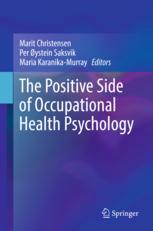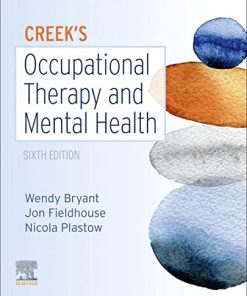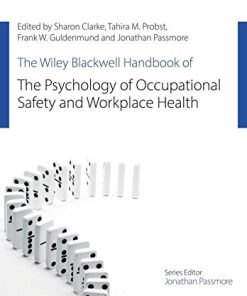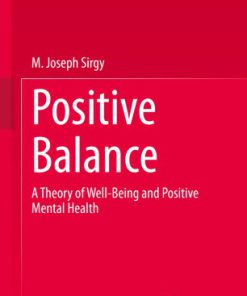The Positive Side of Occupational Health Psychology 1st Edition by Marit Christensen, Per Øystein Saksvik,Maria Karanika Murray 3319667812 9783319667812
$50.00 Original price was: $50.00.$25.00Current price is: $25.00.
The Positive Side of Occupational Health Psychology 1st Edition by Marit Christensen, Per Øystein Saksvik,Maria Karanika-Murray – Ebook PDF Instant Download/DeliveryISBN: 3319667812, 9783319667812
Full download The Positive Side of Occupational Health Psychology 1st Edition after payment.

Product details:
ISBN-10 : 3319667812
ISBN-13 : 9783319667812
Author: Marit Christensen, Per Øystein Saksvik,Maria Karanika-Murray
This book serves as an introduction to the Nordic approach to Occupational Health Psychology and illustrates how this perspective can be transferred to a global audience. It discusses a joining of attitudes from Positive Psychology accompanied by experiences drawn from the Nordic work/life context. Over the decades, Nordic countries have gathered a great deal of experience on the meaningfulness of work, work engagement, presenteeism, absenteeism, job crafting, work family balance, intervention and reorganization. These experiences are explained and offered as a different approach to Occupational Health Psychology, while avoiding the more traditional detrimental topics such as stress, conflict burnout and poor well-being. Instead the authors discuss subjects such as engagement, healthy change, prosperity and welfare and are applied to the current ideas on Occupational Health Science. This book shows that using interdisciplinary observations can help our understanding of modern worker health. It offers gives readers an opportunity to consider how a combination of good work and good health can be stimulated in theory and in practice.
The Positive Side of Occupational Health Psychology 1st Table of contents:
1 What Is the Meaning of the Concept of Work from an Occupational Health Perspective?
References
2 What Is Health from an Occupational Health Perspective?
2.1 Challenges
2.2 History
2.3 Health Promotion
2.4 Definition of Health
2.5 Occupational Health
2.6 Conclusion
References
3 Explanatory Models in Occupational Health Psychology
3.1 Job Control and Collectivism
3.2 Social Control
3.3 The Model of Effort–Reward Imbalance
3.4 The Job Demands–Resources Model
3.5 The Harmony Perspective
3.6 The COR Theory
3.7 The Conflict Perspective
3.8 Measuring Occupational Health Psychology
3.9 The Model in the Nordic Perspective
References
4 Facilitating a Meaningful Work Situation—A Double-Edged Sword?
4.1 Defining Meaningful Work
4.2 Artistic Interventions Fostering Meaning
4.3 Types of Artistic Interventions
4.4 Striving After Meaning: A Double-Edged Sword
4.5 Concluding Thoughts: The Actors of Meaning Creation
References
5 Authentic Leadership, Psychological Capital, and Employees’ Well-Being
5.1 Authentic Leadership
5.2 Are Authentic Leaders Born or Made?
5.3 Components of Authentic Leadership
5.4 Measuring Authentic Leadership
5.5 Cultural Generalizations
5.6 What Is the Relationship Between Authentic Leadership Style and PsyCap?
5.7 Psychological Capital
5.8 Components of PsyCap
5.8.1 Self-efficacy
5.8.2 Optimism
5.8.3 Hope
5.8.4 Resilience
5.9 The Measurement of PsyCap
5.10 Empirical Evidence
5.11 Is Authentic Leadership Style Any Different from Other Leadership Theories?
5.12 Conclusion
References
6 Work, Family, and Leisure
6.1 What Is Work–Family Balance?
6.2 Conflict Versus Facilitation
6.3 Individual Strategies for Promoting Balance
6.4 Organizational Initiatives for Promoting Balance
6.5 Conclusion
References
7 Work Engagement and Job Crafting
7.1 Work Engagement
7.2 Job-Demand-Resources Theory (JD-R)
7.3 Job Crafting
7.4 Defining Job Crafting
7.5 Which Factors Create Job Crafting and What Are the Consequences?
7.6 Practical Examples of Job Crafting
7.7 Conclusion
References
8 Constructive Stress
8.1 Collective Stress Coping
8.2 Norms for Positive Interactions in the Workplace
References
9 Coworkership and Prolific Behaviors in Modern Work Life
9.1 Coworkership
9.2 Coworkership as a Descriptive Concept
9.3 Coworkership as a Normative Concept
9.4 Coworkership and Its Associates/Related Concepts
9.4.1 The Psychological Contract of Employees
9.4.2 Organizational Citizenship Behavior
9.4.3 Personal Initiative
9.4.4 Proactive Work Behavior
9.4.5 Followership
9.4.6 Extra-Role Behavior
9.5 Coworkership—Old Wine in New Bottles?
References
10 Successful Aging at Work
10.1 The Concept of Successful Aging at Work
10.2 Challenges in Society Today
10.3 How to Succeed: A Way to Best Practice
10.4 Successful Aging and the Future
10.5 Final Remarks
References
11 From Sickness Absenteeism to Presenteeism
11.1 Sickness Absenteeism and Presenteeism
11.2 The Authorities’ Initiative for Reducing Sickness Leave
11.3 Presenteeism and Productivity
11.4 Presenteeism and Attendance Pressure
11.5 Absence Legitimacy
11.6 Models for Absence, Presence and Presenteeism
11.7 Further Research
References
12 Healthy Change in Intervention Research and Reorganization
12.1 Present Directions Within Interventional Research
12.2 Primary Interventions
12.3 Secondary Interventions
12.4 Tertiary Interventions
12.5 Community-/National-Level Interventions
12.6 Countervailing Interventions
12.7 The Interventional Process
12.8 Healthy Change
12.9 Change Models and Processes
12.10 The Future
People also search for The Positive Side of Occupational Health Psychology 1st:
positive occupational health
positive occupational psychology
positive effects of occupational therapy
the positive side of low self monitoring is being
occupational health psychology definition
Tags: The Positive Side, Occupational, Health Psychology, Marit Christensen, Per Øystein Saksvik, Maria Karanika Murray
You may also like…
Medicine - Therapy
History & Research
Positive Psychology: The Science of Happiness and Flourishing 3rd Edition William C. Compton
Relationships & Lifestyle - Psychological Self-Help
Computers - Computer Science Psychology - Pedagogy
Positive Psychology The Basics 1st Edition Hart 1138551937 9781138551930
Psychology - Developmental Psychology
Positive Psychology The Science of Wellbeing and Human Strengths 3rd Edition Alan Carr
History & Research
Measures of Positive Psychology Development and Validation 1st Edition Kamlesh Singh












